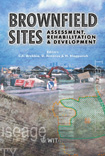Improving The Brownfield’s Timeline For Redevelopment
Price
Free (open access)
Transaction
Volume
55
Pages
Published
2002
Size
673 kb
Paper DOI
10.2495/BF020421
Copyright
WIT Press
Author(s)
L. Curran, D. Kalet, D. Marsh & J. Sherrard-Smith
Abstract
Improving the brownfield's timeline for redevelopment L. Curran1, D. Kalet1, D. Marsh1 & J. Sherrard-Smith2 1Atlantic Richfield, USA. 2BP, United Kingdom. Abstract The Brownfield label is applied to properties whenever liabilities are perceived to exceed the value of the asset. The apparent negative asset value impedes the natural process of development. Reduced value may be inferred for a contaminated property because regulatory requirements to control or remove contamination have not been prescribed yet as part of the regulatory process and, therefore, the most expensive remedy with the longest timeline is factored into the property valuation. (If a property can undergo redevelopment without special attention or investment even if contaminated, the Brownfield label typically is not applied.) If an efficient remedy is incorporated into the redevelopment plan, a new focus may be created, engaging many stakeholders to support the change, and providing a means of leveraging resources to accomplish both the community and the property owner's goals. This paper reviews the factors that have contributed to both the advancement and delay of two redevelopment sites (former refineries) owned by BP in the US. A review of the economics and other incentives from the perspectives of the property owner, the local government, the private investor and other interested parties provides a basis for constructive dialogue among the stakeholders to return the asset to productive use. A well-defined plan with economic support, including resources in addition to the party responsible for cleanup, has shown to reduce the timeline for redevelopment, a critical factor for investors. In these two cases neither the specific remedies nor the reuse plan is as influential in the redevelopment process as is the cooperative approach of the stakeholders. The plans, economics, benefits and the lessons learned from both sites are discussed.
Keywords




